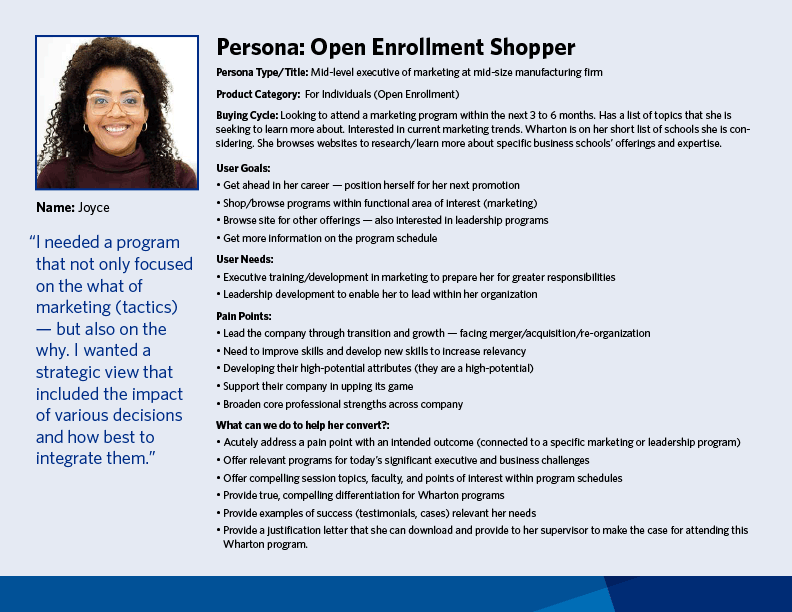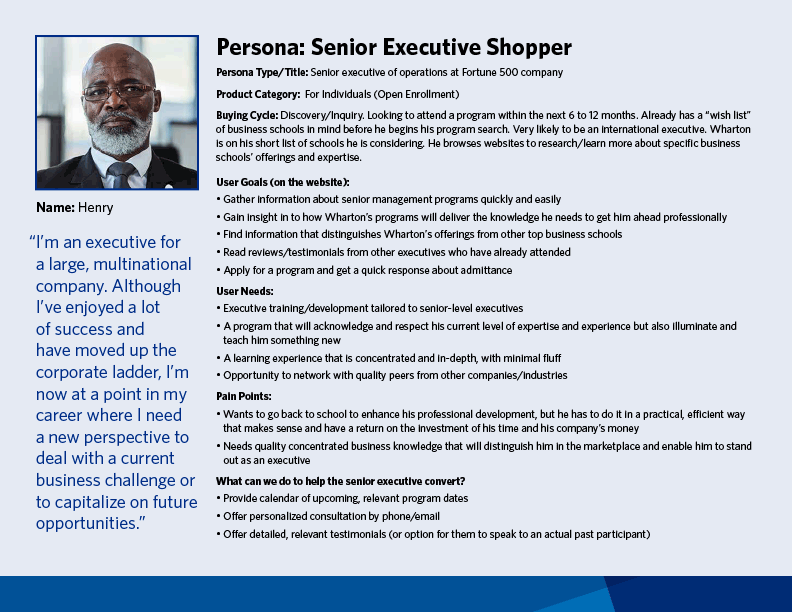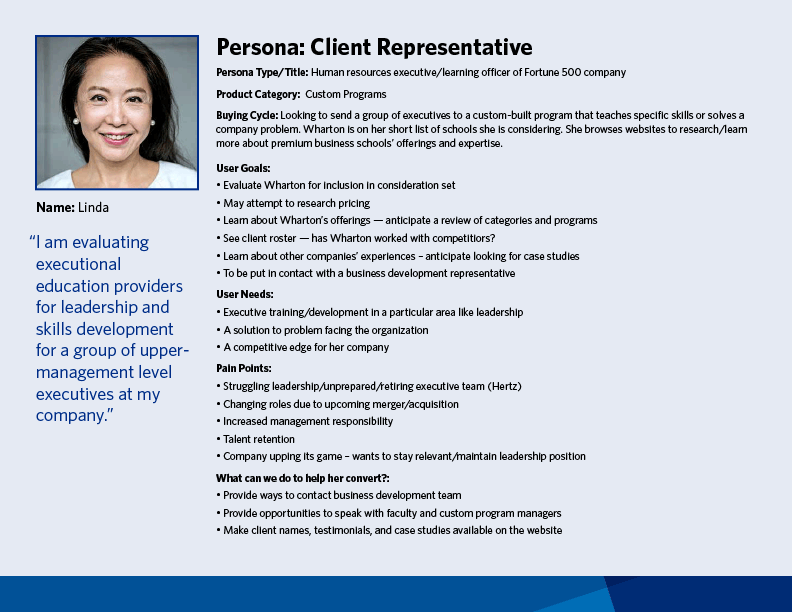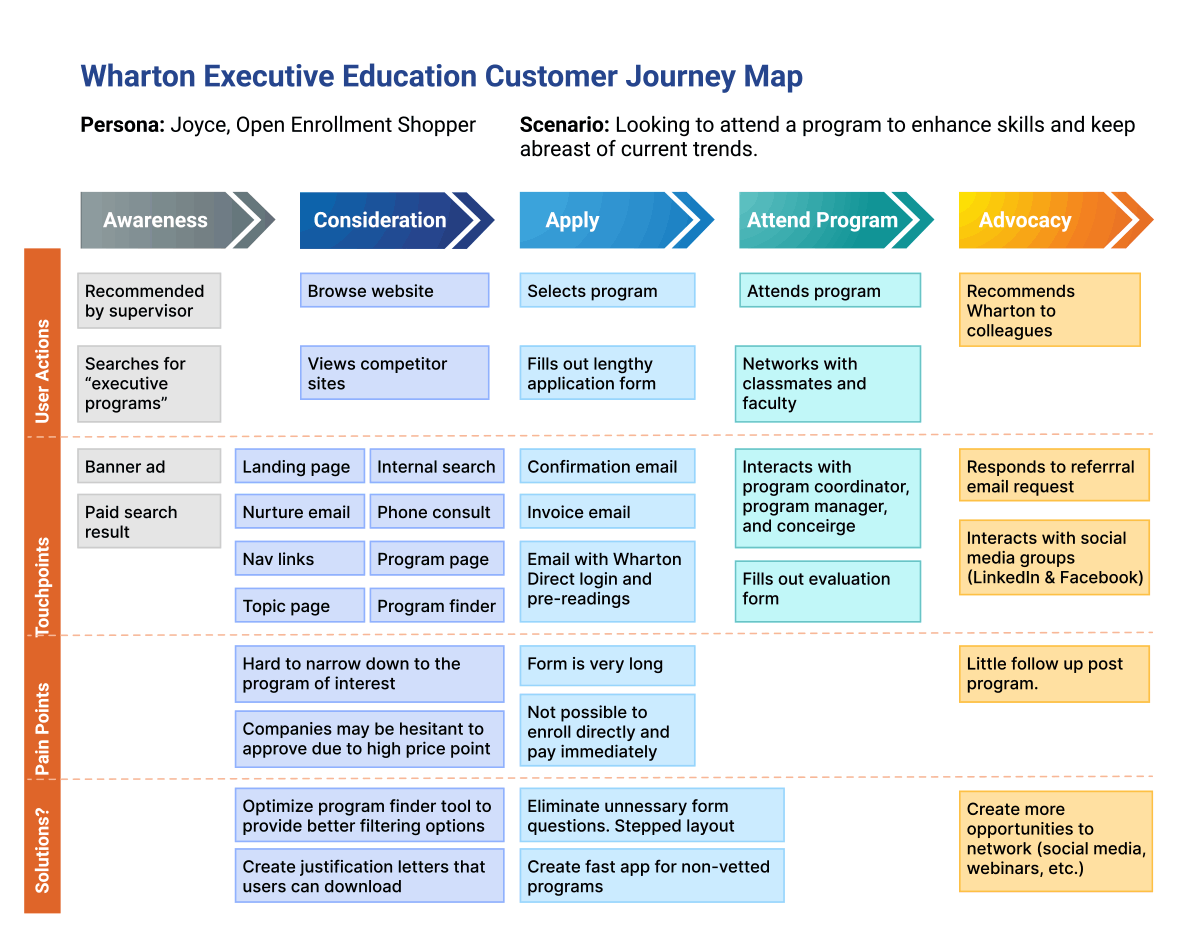Wharton Executive Education Customer Analysis
Project Summary
The goal of this project was to help the marketing team better understand the needs of the executive education customer and how they choose and apply to programs. This would help inform which marketing projects go forward and identify any obstacles to users applying or contacting Wharton.
Three user personas were created, the open-enrollment shopper (mid-level executive), the senior executive shopper, and the client representative. A customer journey map was created to explain the overall experience and identify pain points and solutions.
My Role
As the UX project lead, I gathered information from stakeholders, customer care representatives, the marketing team, and user feedback. This information was used to create customer profiles and a customer journey map (in Figma).
Challenges Discovered
- There was not an easy way to compare programs and filter on specific topics of interest. With over 60 programs offered across a variety of topics, users were faced with a lot of choice and the navigation to pages involved too many clicks.
- Since price point of the programs were high ($8K and above) 90% of users’ fees were company paid. At times users found it difficult to get approval to attend from their companies.
- The application form was very long and intimidating. Many questions asked on the form were not needed to vet the applicant for approval.
- About eight programs did not need to vet applicants but since all programs shared the same form process, users could not enroll directly in those programs and pay at the time of form submission.
Solutions
This project was the catalyst for many projects at Wharton Executive Education.
- A program finder tool was developed to allow users to filter programs across a variety of criteria (keyword, upcoming date, career level, format, topic, duration, and location). It also allowed users to pick up to three programs for comparison.
- Program-specific justification letters were made available for users to download and provide to their supervisors for company approval.
- Application forms were audited to eliminate unnecessary questions and combine others. The layout of the form was changed from one long form to a stepped form with indicators to where a user was in the process.
- A fast-app form process was developed to allow users to apply and pay for non-vetted forms directly.



